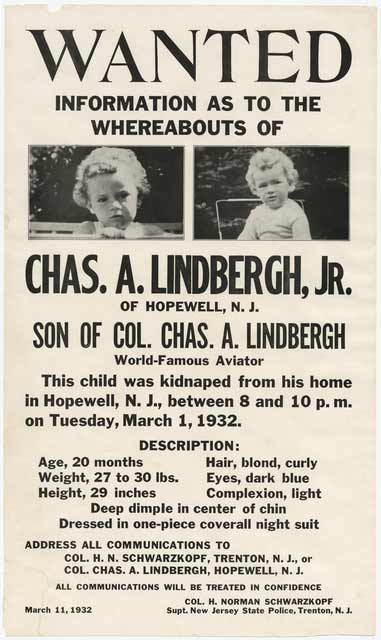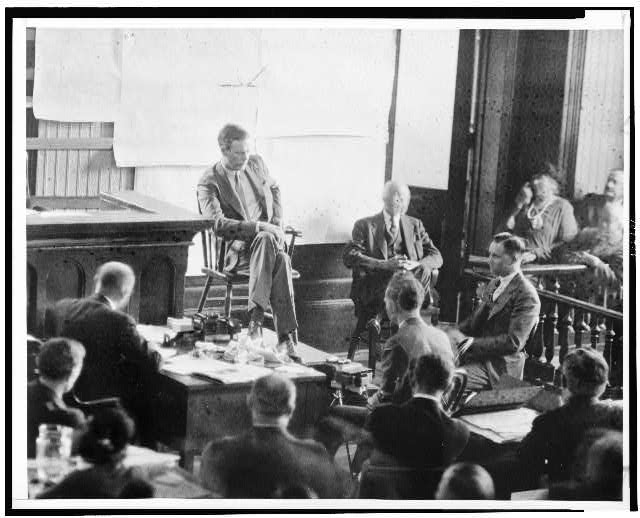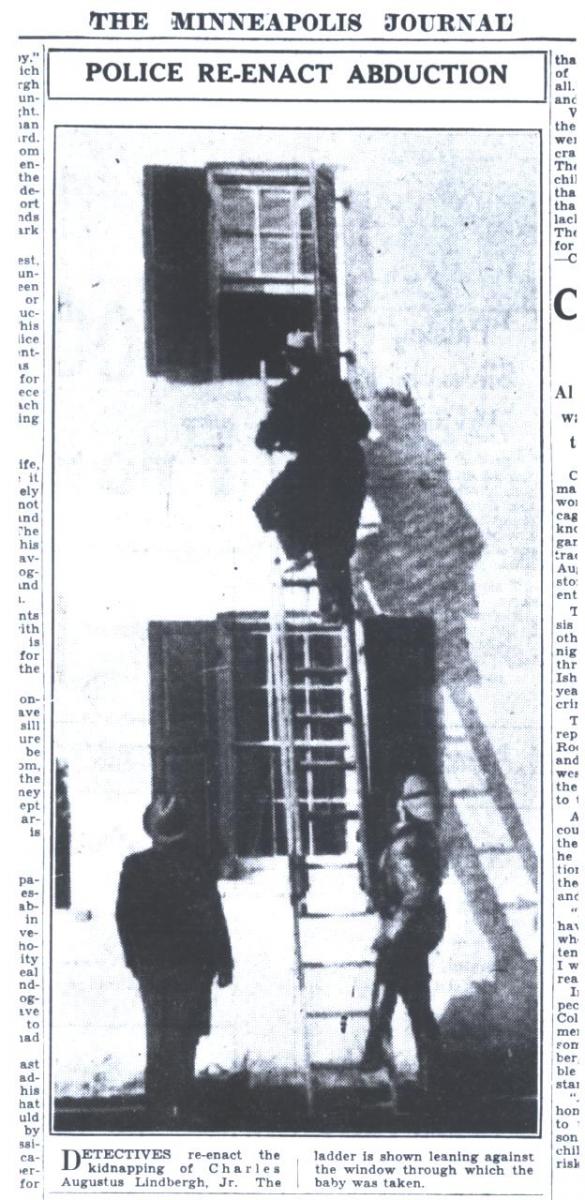Kidnapping and Trial
On Mar 1, 1932, Charles Lindbergh, Jr., the first child of Charles and Anne Lindbergh, was kidnapped from his home. Two years later an arrest was made.
The circumstances surrounding the trial in which German immigrant carpenter Bruno Richard Hauptmann was convicted of murder still leaves many wondering if justice was carried out, inspiring conspiracy theories that have haunted this case since the beginning.
The case
On Jun 22, 1930, Anne’s 24th birthday, the Lindberghs welcomed their first child, a son they named Charles Augustus Lindbergh Jr., or "Charlie." Almost immediately requests for photographs came in from the press and admiration flowed from the public. During this time, the Lindberghs were building a house in a remote area near the town of Hopewell, New Jersey.
On the night of Mar 1, 1932, the baby was stolen from his crib in a second-floor bedroom, while both Lindberghs and several staff were elsewhere in the house. A ransom note, a broken ladder propped against the outside wall, and other clues were discovered. The Hopewell house was turned into the headquarters of a police investigation, and over the next few weeks numerous letters and tips poured in.
Through go-betweens, the Lindberghs paid $50,000 in ransom to a man claiming to have information about the baby. When Lindbergh went to where the baby was said to be held, it turned out to be a hoax.
Ten weeks after the kidnapping, on May 12, the body of a toddler was found partially buried in the woods near the Lindbergh home. Charles Lindbergh identified the body as that of his son, who had apparently died the night he was taken.

Lindbergh kidnapping wanted poster. Source: MNHS Collections.
The trial
With no suspects and no leads, the case went cold. But two years later one of the ransom bills surfaced, leading investigators to indict Bruno Richard Hauptmann, a German immigrant, on charges of extortion and murder in the first degree. Hauptmann pleaded not guilty.
Hauptmann’s trial begin in January 1935 and quickly became a media circus. Both Charles and Anne Lindbergh took the stand as witnesses, as did the ransom go-between, John F. Condon (known as "Jafsie").
Condon identified Hauptmann as the man to whom he paid the ransom. Other crucial testimony came from a wood scientist, who examined the ladder and concluded that parts of it matched pieces of lumber from Hauptmann's attic. Three weeks into the trial, a visibly nervous Hauptmann took the stand. Though he admitted to lying to the police, he continued to profess his innocence.
The jury found Hauptmann guilty of murder in the first degree, and he was sentenced to death by electrocution. On Apr 3, 1936, Bruno Richard Hauptmann was executed at the state prison in Trenton, New Jersey.

Anne and Charles Lindbergh on the witness stand.
The aftermath
The Lindbergh kidnapping case led the US Congress to pass the Federal Kidnapping Act, also known as the Lindbergh Law. This act made kidnapping a federal offense and allowed federal investigators the authority to pursue kidnappers across state jurisdictions.
The public fascination with the Lindbergh kidnapping case continues to this day, with many books, movies, documentaries, and websites devoted to a wide spectrum of conspiracy theories and alternate readings of the evidence and the trial's conclusions.

Minneapolis Journal March 3, 1932 "Police Re-Enact Abduction."
Resources
Behn, Noel. Lindbergh: The Crime. New York: The Atlantic Monthly Press, 1994.
Cahill, Richard T. Hauptmann’s Ladder. A Step-by-Step Analysis of the Lindbergh Kidnapping. Kent, OH: Kent State University Press, 2014.
Condon, Dr. John F. Jafsie Tells All! New York: Jonathan Lee Publishing Corp., 1936.
Fisher, Jim. The Lindbergh Case. New Brunswick, NJ: Rutgers University Press, 2012.
Gardner, Lloyd C. The Case That Never Dies: The Lindbergh Kidnapping. New Brunswick, NJ: Rutgers University Press, 2012.
Kennedy, Ludovic. The Airman and the Carpenter: The Lindbergh Kidnapping and the Framing of Richard Hauptmann. New York: Viking Penguin, Inc., 1985.
Scaduto, Anthony. Scapegoat: The Lonesome Death of Bruno Richard Hauptmann. New York: G.P. Putnam’s Sons, 1976.
Waller, George. Kidnap: The Story of the Lindbergh Case. New York: The Dial Press, 1961.
Zorn, Robert. Cemetery John: The Undiscovered Mastermind of the Lindbergh Kidnapping. New York: Overlook Press, 2012.

